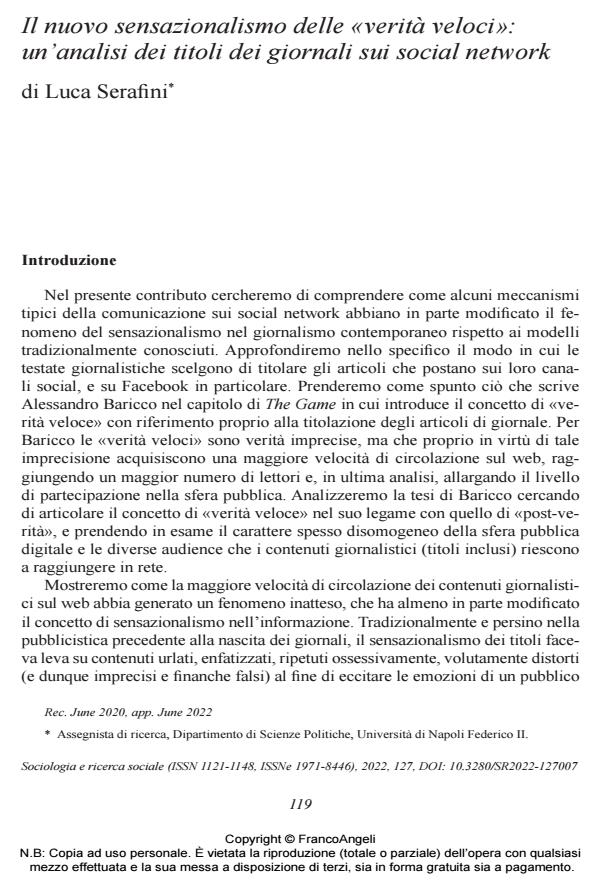The new sensationalism of «quick truths»: an analysis of newspa- per headlines on social networking sites
Journal title SOCIOLOGIA E RICERCA SOCIALE
Author/s Luca Serafini
Publishing Year 2022 Issue 2022/127
Language Italian Pages 19 P. 119-137 File size 214 KB
DOI 10.3280/SR2022-127007
DOI is like a bar code for intellectual property: to have more infomation
click here
Below, you can see the article first page
If you want to buy this article in PDF format, you can do it, following the instructions to buy download credits

FrancoAngeli is member of Publishers International Linking Association, Inc (PILA), a not-for-profit association which run the CrossRef service enabling links to and from online scholarly content.
This paper shows how some typical communication mechanisms on social networking sites have reconfigured the phenomenon of sensationalism in journal- istic information. Analyzing newspaper headlines on social platforms, it is clear that a «minimalist sensationalism» is emerging, which is connected to a specific articulation of the concept of post-truth, that of «quick truth». The strengths and weaknesses of this new sensationalism are then examined: sometimes, it facilitates users’ access to information of public interest. In other cases, however, the intrinsic limits of online communication and the digital public sphere (often artic- ulated based on homophilic networks) lead such imprecise truths to fuel misinfor- mation and deprive users of their reflective capacities.
Luca Serafini, Il nuovo sensazionalismo delle «verità veloci»: un’analisi dei titoli dei giornali sui social network in "SOCIOLOGIA E RICERCA SOCIALE " 127/2022, pp 119-137, DOI: 10.3280/SR2022-127007